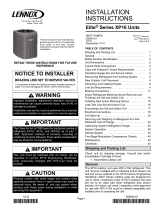
TABLE OF CONTENTS
INTRODUCTION
Thank you for purchasing the CPS
®
PRO-SET
®
CR500 refrigerant recovery machine. Like
any CPS
®
product, the CR500 series machines combine the latest in product tech-
nology with the practical “hands on” features that our customers actively request. Focusing
on product performance, recovery speed and reliability, we were able to develop the most
advanced oil-less recovery machines on the market today!
Designed to service commercial/residential refrigeration and air-conditioning systems, the
PRO-SET
®
CR500 is the lightest most compact refrigerant recovery machine in its class. A
convenient “QUICK START GUIDE” is permanently attached to the side of the unit and acts
as a quick and easy reference for the proper operation of the unit. Once the recovery is
complete, simply turn the center valve to the SELF-CLEARING position to automatically
remove any residual refrigerant left in the machine. The unit is now ready to recover the next
refrigerant type.
The PRO-SET® CR500 series utilizes a 1/3hp/0.75kW oil-less compressor,
non-restrictive manifold valves and a high efficiency rifle-fin condenser/evaporator
combination for quick and easy refrigerant recovery.
Additional features include:
• EXTREMELY LIGHTWEIGHT: unit weighs less than 20 lbs/9.1 kg
• HIGH PERFORMANCE integrated fan
• “ON THE RUN” SELF-CLEARING VALVE: No need to turn the unit off when
switching from recovery to self-clearing.
• BUILT-IN FILTER: located under intake port. No dangling filters to damage.
• FILTER CARTRIDGE can be easily cleaned or replaced
• R-410A COMPATIBLE: Special high-pressure unit design with extended pressure
gauge ranges.
• HIGH EFFICIENCY rifle-fin condenser/evaporator
• INTEGRATED MANIFOLD BLOCK BODY
• On Board suction and discharge gauges
• INDESTRUCTIBLE high density polyethylene case
• HEAVY DUTY powder coated aluminum chassis
• COMFORTABLE integrated carrying handle
• 550 psig High-pressure cutout
• MAINTENANCE FREE oil-less compressor
• OPTIONAL TANK OVERFILL SENSOR cord kit
To help you get a good start, please continue to read the balance of this manual. It
contains important information on the operation, maintenance and safety issues you
should thoroughly understand before attempting to operate the CR500 series machine.
We recommend that you pay close attention to the safety information, WARNINGS and
CAUTIONS located throughout this manual. Always remember, “Safety First.”
2
INTRODUCTION ....................................................................... 2
GENERAL SAFETY INSTRUCTIONS ....................................... 3
SPECIFICATIONS ..................................................................... 4
DIRECT LIQUID OR VAPOR RECOVERY ............................... 5
LIQUID PUSH-PULL RECOVERY ............................................ 5
ROUTINE MAINTENANCE ....................................................... 6
TROUBLE SHOOTING CHART ................................................ 7
HELPFUL HINTS ....................................................................... 7








